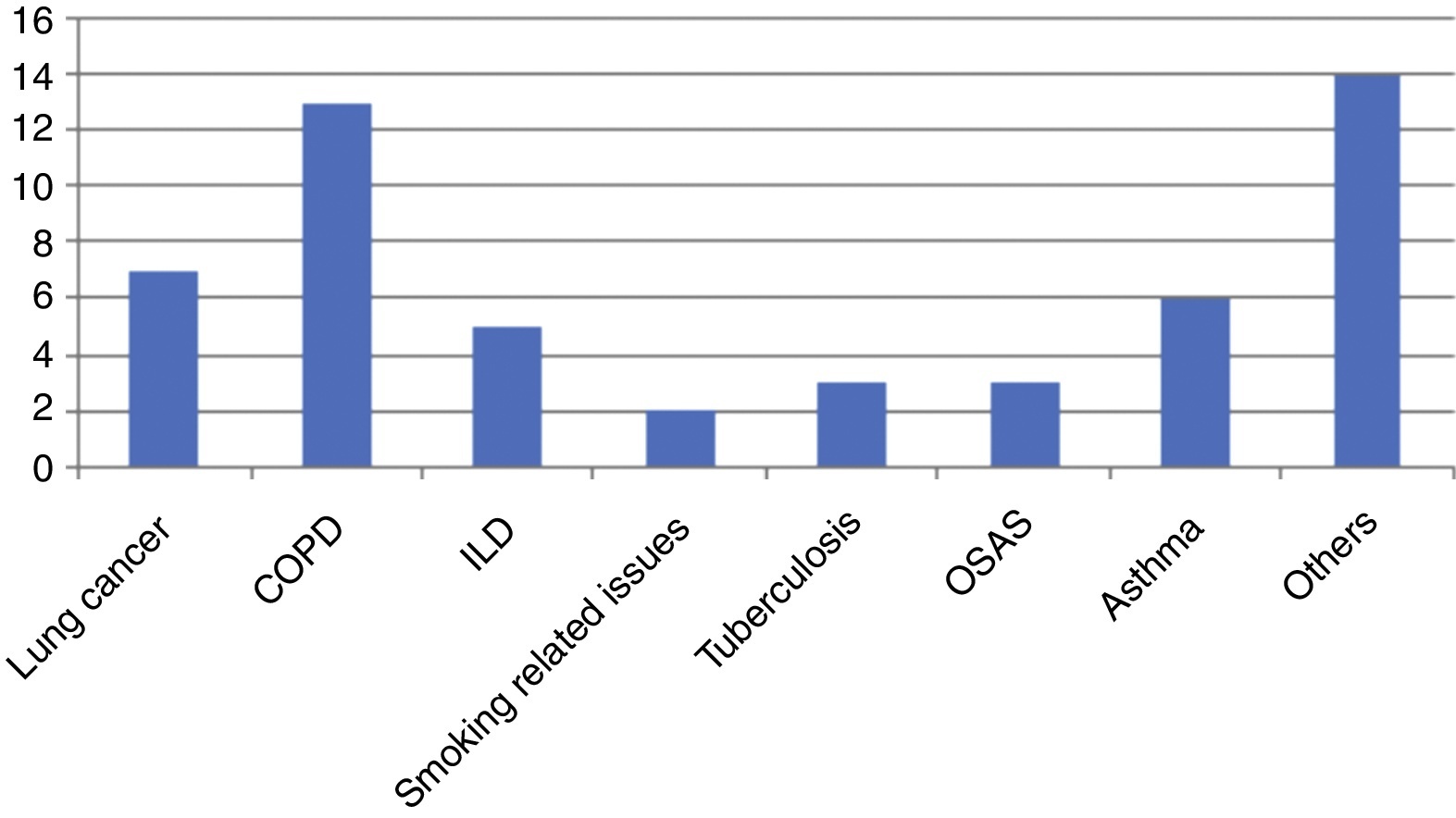As we have stated in a previous editorial, The Portuguese Journal of Pulmonology (PJP) is committed to cover all kinds of topics related to respiratory physiology and pathology. As a Portuguese Pulmonology Society (SPP) Journal, has necessarily to consider all the issues and special situations related to all respiratory disorders and to showcase the variety of Portuguese research in this area. Every year we have to do a rigorous evaluation about the original articles published in PJP, which topics, its provenience and the citations that generate.1
Considering the two previous years, we continue to observe a significant multiplicity of respiratory themes addressed by the various research articles published in PJP, which fulfils the first aim of a general respiratory journal. Coincident with this broad-spectrum of topics, the obstructive lung diseases as the most prevalent of respiratory diseases were the leading issue addressed by the authors, being COPD responsible for 24.5% 2, 3, 4 of the original articles and asthma for 11.1%.5, 6 Lung cancer (13.2%) and Interstitial Lung Diseases (9.4%) were the following most frequent issues addressed in the published articles during the years 2013-2014 (Figure 1). Additionally, it should be noted that PJP published three epidemiologic papers related with COPD and lung cancer, which contributes for a more accurate awareness of the national and regional reality regarding these diseases.3, 7, 8 Additionally all the editions had review papers related also with different respiratory issues, elaborated by recognized national and international authors.9, 10 On the other hand, letters to editor became a regular and important part of all the editions, and they are now one of the most frequent article typology submitted to PJP.
Figure 1. Number of articles according with the different respiratory topics.COPD- Chronic Obstructive Pulmonary Disease; ILD-Interstitial Lung Diseases; OSAS- Obstructive Sleep Apnea Syndrome; Others contain a group of single articles related with different respiratory issues.
Although, the number and provenience of foreign submissions to PJP had been steadily growing, only 37.03% of the published papers are from international researchers. Their provenience is diverse (Spain, Italy, Turkey, Greece or Morocco), although with a predominance from Brazil, which is the provenience of 45% of the international papers published in the last two years.11, 12 In what citations is concerned, there is no clear predominance regarding a specific article or topic and the journals which contain citations related with PJP articles are also diverse. We have to maintain the route of the last years, opening PJP to the international researchers, turning our journal increasingly appealing in order to promote more reads and citations, because only with these achievements the Portuguese research will have also an increasing visibility and impact.
Received 17 November 2015








